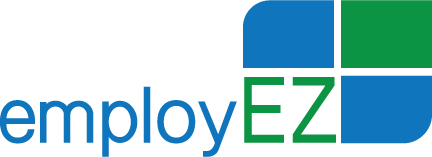
by Antonia Valenzuela | Jan 18, 2024 | Human Resources, Workers' Compensation
Mastering workers’ compensation claims is crucial for businesses to effectively manage workplace injuries while controlling costs. By implementing best practices, businesses can ensure prompt reporting, effective documentation, and support for injured employees. Additionally, conducting thorough claims investigations, ensuring legal compliance, fostering open communication, and implementing cost control measures are essential for successful claims management. Here are some crucial best practices that businesses can adopt to excel in workers’ compensation claims management, fostering a secure and supportive work environment for their valued employees.
Encourage Prompt Reporting and Documentation
Encourage employees to promptly report workplace injuries or incidents. By doing so, businesses can ensure swift medical intervention and accurate claims processing. Maintaining comprehensive documentation, including incident reports, witness statements and medical records, supports the claims process and helps prevent potential fraudulent claims.
Provide Employee Assistance
Support injured employees by providing guidance on reporting procedures, available benefits, and their rights under workers’ compensation laws. Offering assistance in navigating the claims process and connecting them with appropriate medical providers fosters trust between the employer and employees, making the process more manageable for everyone involved.
Implement Return-to-Work Programs
Establish effective return-to-work programs that facilitate the injured employee’s transition back to suitable work. Providing modified duties or transitional tasks not only benefits employees by allowing them to contribute while recovering, but also minimizes the impact of absences on business operations and productivity.
Conduct Thorough Claims Investigations
Thoroughly investigate each workers’ compensation claim, gathering relevant facts, interviewing witnesses and reviewing documentation. Prompt investigations help identify potential red flags and protect the business from unnecessary costs, while enabling the implementation of corrective measures to prevent similar incidents in the future.
Ensure Legal Compliance
Stay informed about workers’ compensation laws and regulations. Adhering to reporting obligations and cooperating fully with the insurance carrier and regulatory authorities is essential to avoid fines, penalties and potential litigation.
Promote Effective Communication
Maintain open and transparent communication with all stakeholders. Keeping injured employees updated on their claim status and working closely with the insurance carrier to provide the necessary information and follow their guidance helps build trust, reduces misunderstandings, and ensures a smoother claims process.
Implement Cost Control Measures
Implement cost control measures, such as safety training programs, regular inspections, and employee safety awareness, to reduce the frequency and severity of workplace injuries. Proactive safety measures not only protect employees, but also contribute to lower workers’ compensation costs over time.
Mastering workers’ compensation claims is crucial for businesses to effectively manage workplace injuries while controlling costs. By adopting best practices such as prompt reporting, documentation, employee assistance, return-to-work programs, claims investigation, legal compliance, communication, and cost control measures, businesses can navigate the claims process efficiently and prioritize employee well-being. Implementing these practices establishes a safe and supportive work environment, benefiting both employees and the overall success of the business.
At employEZ, we understand the complexities of workers’ compensation claims and can help you implement best practices for such claims. We offer cost-effective workers’ compensation insurance and claims management. Our expert guidance and comprehensive solutions are designed to ensure that your business remains compliant, and your employees receive the support they need. Contact us today to empower your employees and safeguard your business with competitive workers’ compensation insurance rates and expert claims management.
For more insights on workers’ compensation regulations, visit your state’s Workers’ Compensation Board website.
You also might be interested in: https://employ-ez.com/workers-compensation-fraud-red-flags/

by Antonia Valenzuela | Nov 15, 2023 | Benefits of a PEO, Workers' Compensation
Are you looking to supercharge your workers’ compensation program? Discover the benefits of partnering with a Professional Employer Organization (PEO) for workers’ compensation – enhancing your program’s efficiency, saving costs, and ensuring compliance. Working with a PEO is a powerful way for businesses to optimize their workers’ compensation benefits, as this article explains.
Expert Support and Resources
Tap into the expertise of PEO professionals who possess deep knowledge of workers’ compensation regulations and best practices. Their guidance helps ensure compliance with state-specific laws, precise documentation, and effective claims management. With expert support and resources at your disposal, you can navigate the complexities of workers’ compensation confidently and efficiently.
Enhanced Risk Management
Mitigate risks and create a safer work environment with a PEO’s comprehensive risk management strategies, in line with Occupational Safety and Health Administration (OSHA) guidelines. PEOs offer tailored safety training programs, conduct inspections, and provide guidance on minimizing workplace injuries. By proactively addressing risk factors, you reduce the likelihood of accidents, leading to lower workers’ compensation premiums and improved profitability.
Efficient Claims Management
Managing workers’ compensation claims can be complex and time-consuming. PEOs streamline the claims management process, handling reporting, documentation, and communication with insurance carriers. Their expertise ensures timely resolution and support for injured employees throughout their recovery journey, minimizing disruption to your business operations.
Assured Compliance
Navigating workers’ compensation regulations is challenging, but a PEO takes that burden off your shoulders. They handle paperwork, manage audits, and maintain accurate records, ensuring compliance with all legal requirements. By partnering with a PEO, you can focus on your business, knowing that compliance is assured.
Cost Savings and Optimization
One of the most significant benefits of PEOs is cost savings. Not only are they able to leverage their purchasing power to negotiate favorable insurance rates, but they also implement risk management initiatives and streamline claims processes. By reducing claim frequency and risk, controlling costs, and optimizing your workers’ compensation program, a PEO helps you allocate resources more effectively, thus maximizing profitability.
Drive Business Success Through a PEO Partnership
Unlock the true potential of workers’ compensation benefits by partnering with the employEZ family of PEOs. Contact us today for a personalized consultation. Especially when you’re approaching workers’ compensation renewal time, make sure you are getting the best coverage at the best price. Through streamlined benefits administration, expert support, enhanced risk management, and efficient claims management, a PEO takes the work out of workers’ compensation, while you reap the benefits of compliance and cost savings.
You may also be interested in: Identifying Red Flags for Workers’ Compensation Fraud.


by Antonia Valenzuela | Oct 31, 2023 | Workers' Compensation
First and foremost, it’s crucial to understand that requesting Workers’ Compensation loss runs is not just a practical need; it’s your right. It empowers your business and allows you to make informed decisions. In this article, we will delve into the importance of requesting Workers’ Compensation loss runs, what exactly loss runs are, and why you shouldn’t hesitate to request them from your carrier or broker. Remember, it’s your property, your right, and there’s no need to feel shy or worry about hurting anyone’s feelings.
What Are Workers’ Compensation Loss Runs?
Before we dive into the significance of requesting them, let’s clarify what loss runs are. Loss runs, also known as loss history reports, are comprehensive documents that provide a detailed overview of your company’s claims history within the Workers’ Compensation insurance framework. They contain crucial information such as the dates of workplace incidents or injuries, the nature of the claims, claim amounts, and the current status of each claim. Essentially, they serve as a historical record of your Workers’ Compensation insurance claims.
Why Requesting Workers’ Compensation Loss Runs Matters
Now that we understand what loss runs are, let’s explore why requesting them is so important:
1. Empowering Your Business:
Requesting Workers’ Compensation loss runs empowers your business. By analyzing your past claims, you can identify trends, take preventive measures, and ultimately reduce future losses.
2. Premium Accuracy:
Your Workers’ Compensation insurance premiums directly depend on your company’s loss history. Accessing accurate loss runs guarantees you pay a fair premium that aligns with your actual risk exposure. No overpaying due to inaccuracies in your claims history is necessary.
3. Policy Evaluation:
Loss runs allow you to evaluate whether your current Workers’ Compensation policy meets your company’s needs. Armed with this data, you can make informed adjustments to your policy, potentially saving money and enhancing your coverage.
4. Compliance and Reporting:
In many industries and jurisdictions, loss runs may be required for compliance and reporting purposes. Having these reports readily available ensures that you are prepared to meet regulatory requirements and legal obligations.
Requesting Workers’ Compensation Loss Runs is Your Right!
You shouldn’t hesitate or worry about hurting anyone’s feelings when exercising this right. Here’s how to go about it without hesitation:
1. Contact Your Insurance Provider:
Reach out to your Workers’ Compensation insurance provider, whether it’s an agent, broker, or directly through the insurer. Clearly state your request for loss runs.
2. Provide Necessary Information:
Be prepared to supply specific information, such as your policy number, the requested time frame for the loss runs, and any particular details or formats you require.
3. Professional Communication:
Make your request professionally and courteously. Emphasize that your intention is to use the information for risk management and informed decision-making rather than as a critique of your insurer’s services.
4. No Need to Hesitate:
Remember that it’s your right to request these reports. You are not being unreasonable or causing harm by seeking information that directly impacts your business.
5. Follow Up Appropriately:
If there are any delays or complications in obtaining the loss runs, follow up with your insurance provider with a polite reminder. Delays can sometimes result from logistical issues, so patience and persistence may be necessary.
Requesting Workers’ Compensation loss runs is an essential practice for any business committed to managing risk effectively and making well-informed decisions about their insurance coverage. Your right to access this information should never be a cause for hesitation or concern. It’s about safeguarding your business’s financial well-being and ensuring that you have the right coverage in place. By asserting your rights professionally and transparently, you can strengthen your partnership with your insurance provider while taking charge of your risk management strategy. Don’t hesitate!

You may also be interested in: Identifying Red Flags for Workers’ Compensation Fraud

by Antonia Valenzuela | Oct 18, 2023 | Human Resources

by Antonia Valenzuela | Oct 9, 2023 | Human Resources
In today’s fast-paced business world, ensuring workplace safety and minimizing risks is not just a legal obligation; it’s a moral imperative. One of the key tools in achieving this is the Occupational Safety and Health Administration (OSHA) compliance checklist. In this article, we’ll explore the importance of OSHA compliance, and provide you with a comprehensive checklist to keep your workplace safe and secure.
The Significance of OSHA Compliance
Workplace safety is a top priority for every organization, and OSHA plays a pivotal role in achieving this goal. The Occupational Safety and Health Administration, established in 1970, is responsible for setting and enforcing safety and health regulations in the workplace. OSHA compliance is not just about avoiding hefty fines; it’s about safeguarding your employees and creating a culture of safety.
OSHA Compliance Checklist: Your Roadmap to Safety
To ensure workplace safety and minimize risks effectively, you need a roadmap to follow. This OSHA compliance checklist will serve as your guide:
1. Hazard Assessment:
Begin by identifying potential hazards in your workplace. Regular inspections and risk assessments are crucial for pinpointing risks.
2. Employee Training:
Ensure that all employees receive proper training on safety procedures and equipment usage. Training should be ongoing to keep everyone informed about the latest safety protocols.
3. Safety Equipment:
Provide and maintain necessary safety equipment, such as personal protective gear, fire extinguishers, and first-aid kits.
4. Emergency Response Plan:
Develop a comprehensive emergency response plan, including evacuation procedures, contact information, and designated meeting points.
5. Record Keeping:
Maintain thorough records of safety training, incident reports, and equipment maintenance. Documentation is essential for compliance and incident investigations.
6. Hazard Communication:
Implement a clear system for communicating hazards, including labels, signs, and safety data sheets for hazardous chemicals.
7. Safety Committees:
Establish safety committees comprising both management and employees to promote a collaborative approach to safety.
8. Regulatory Compliance:
Stay updated with OSHA regulations, and make necessary adjustments to your safety program accordingly. Explore more about OSHA regulations here.
9. Reporting and Investigating Incidents:
Promptly report and investigate all workplace incidents, and take corrective actions to prevent future occurrences.
10. Employee Involvement:
Encourage employees to actively participate in safety initiatives by soliciting their feedback and suggestions.
By incorporating these elements into your workplace, you not only achieve OSHA compliance but also foster a culture of safety that protects your most valuable assets—your employees.
How an EmployEZ PEO Can Help
OSHA compliance is not an option but a necessity for any responsible business. This OSHA compliance checklist for workplace safety provides you with the essential steps to minimize risks and ensure a secure environment for your employees. Remember, workplace safety isn’t a one-time effort; it’s an ongoing commitment. Prioritize OSHA compliance today, and together, let’s build safer, more secure workplaces for a brighter future. Contact employEZ for expert assistance in your journey toward workplace safety and regulatory compliance. Let us help you with employee management, risk management, workers’ compensation and more.
You may also be interested in: Identifying Red Flags for Workers’ Compensation Fraud









